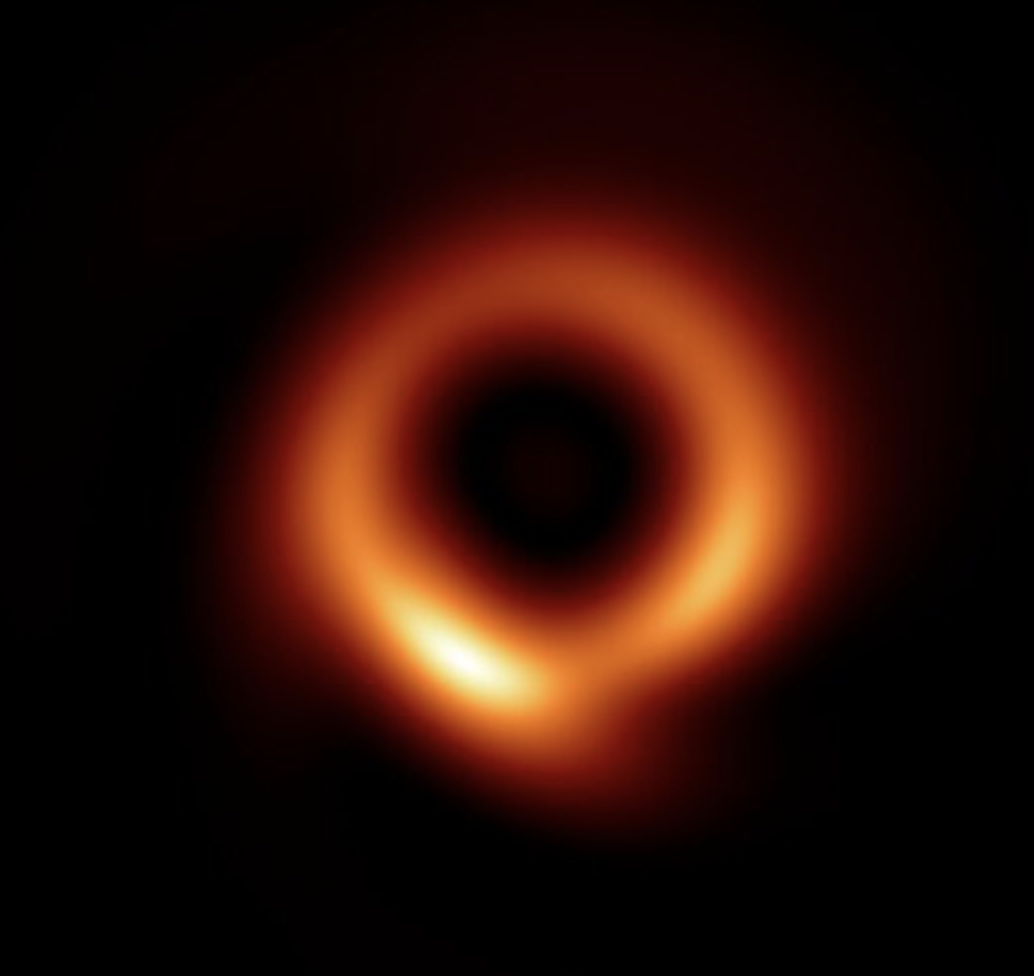First Photo of a Black Hole

So you probably thought you would never see a photo of a black hole since, well, no light can escape its gravitational field and it reflects no light. However, at the outer radius, interstellar dust and gas is spiralling into the hole at almost light speed and due to its heat, it emits x-rays that we CAN see. That's what you see in the photo above - The first ever photo of a black hole. This object is at the center of a spiral galaxy, similar to ours, 55 million light-years away. The current estimate is that it has the mass of ~6 billion suns. FYI - the black hole at the center of our galaxy is estimated to be more than 4 million solar masses.
Do we live inside of a black hole? If we did, how would we know? One way would be to calculate our event horizon. A black hole's event horizon is the point that, if crossed, there is no escaping the gravitational field of the black hole. This is formally known as the Schwarzchild radius. Every black hole has one. So if we are living inside a black hole, we could calculate our Schwarzchild radius. The math is fairly simple if you know the mass of the object (the universe). The universe as we know it has an estimated mass of at least 1.5x1053 kg. If we assume we are living in a black hole, then our Schwarzchild radius should be close to the radius of the universe which is 4.4x1026 meters. We can calculate our radius using the following formula: R = 2GM/c2 where M equals the mass, c equals the speed of light (3x108 m/s) and G is Newton's gravitational constant (6.67x10-11 m3 kg-1 s-2). Solving for R gives us a radius of 2.2x1026 meters. Amazingly close to the current size of 4.4x1026 meters. Too close to be a coincidence? Actually, the mass of the universe is stated to be at least 1.5x1053 kg. If it is 3x1053 kg, then our radius is spot on for a black hole universe. However, this doesn't take into account dark matter, which makes up for a much larger percentage than the matter we can see, so we probably don't live inside a black hole.